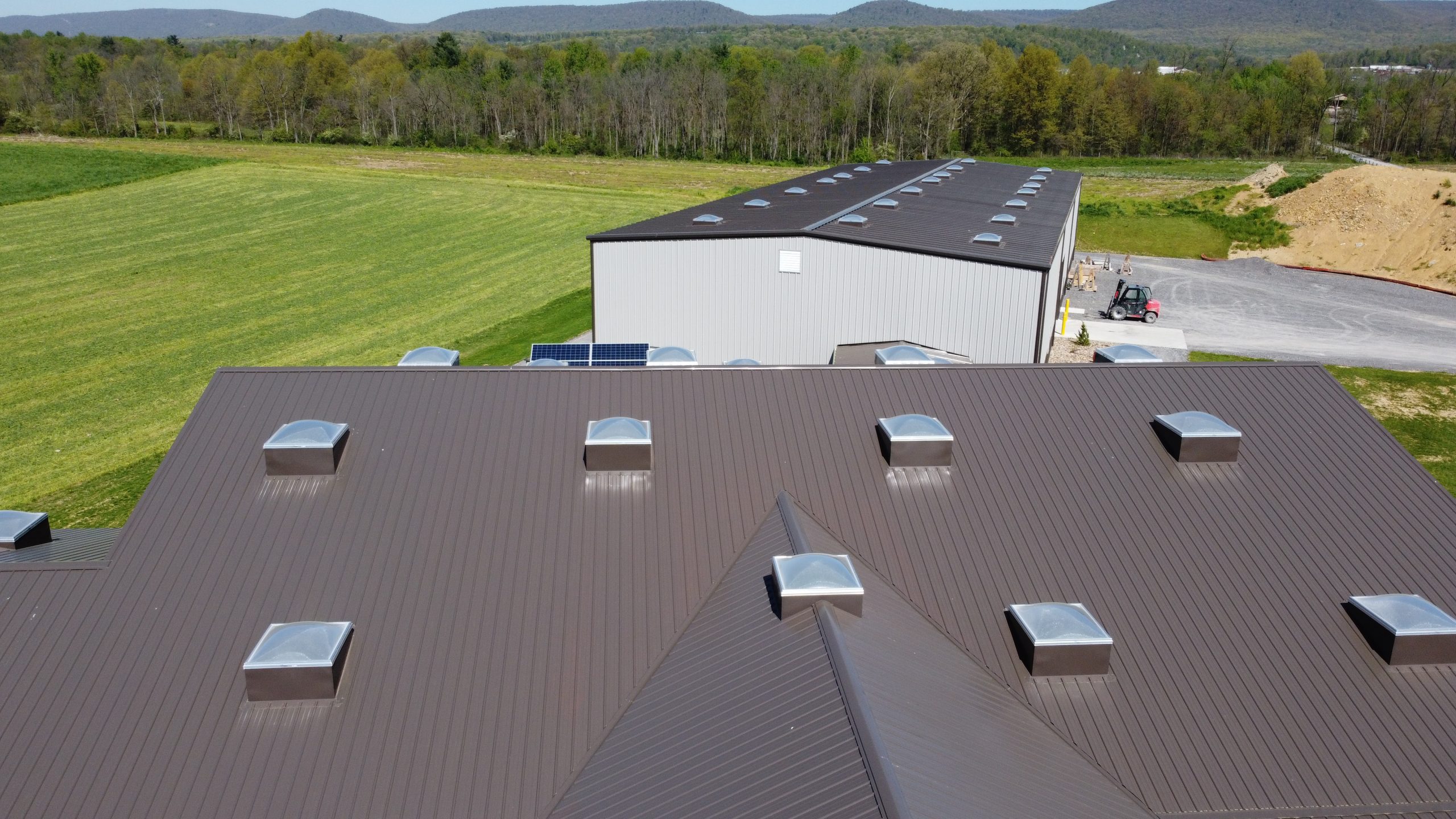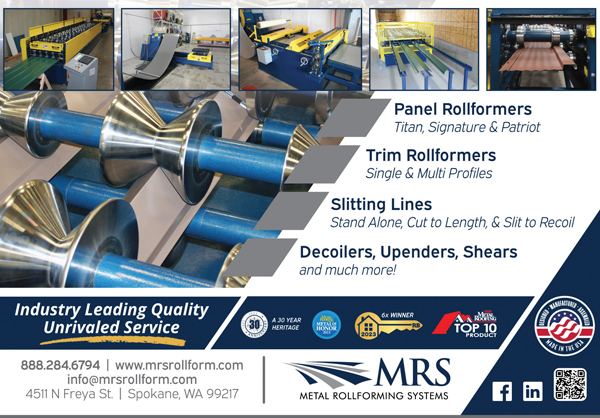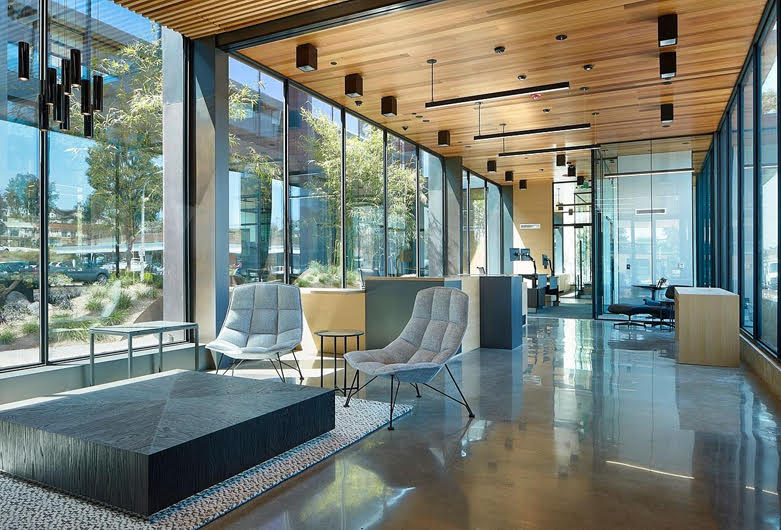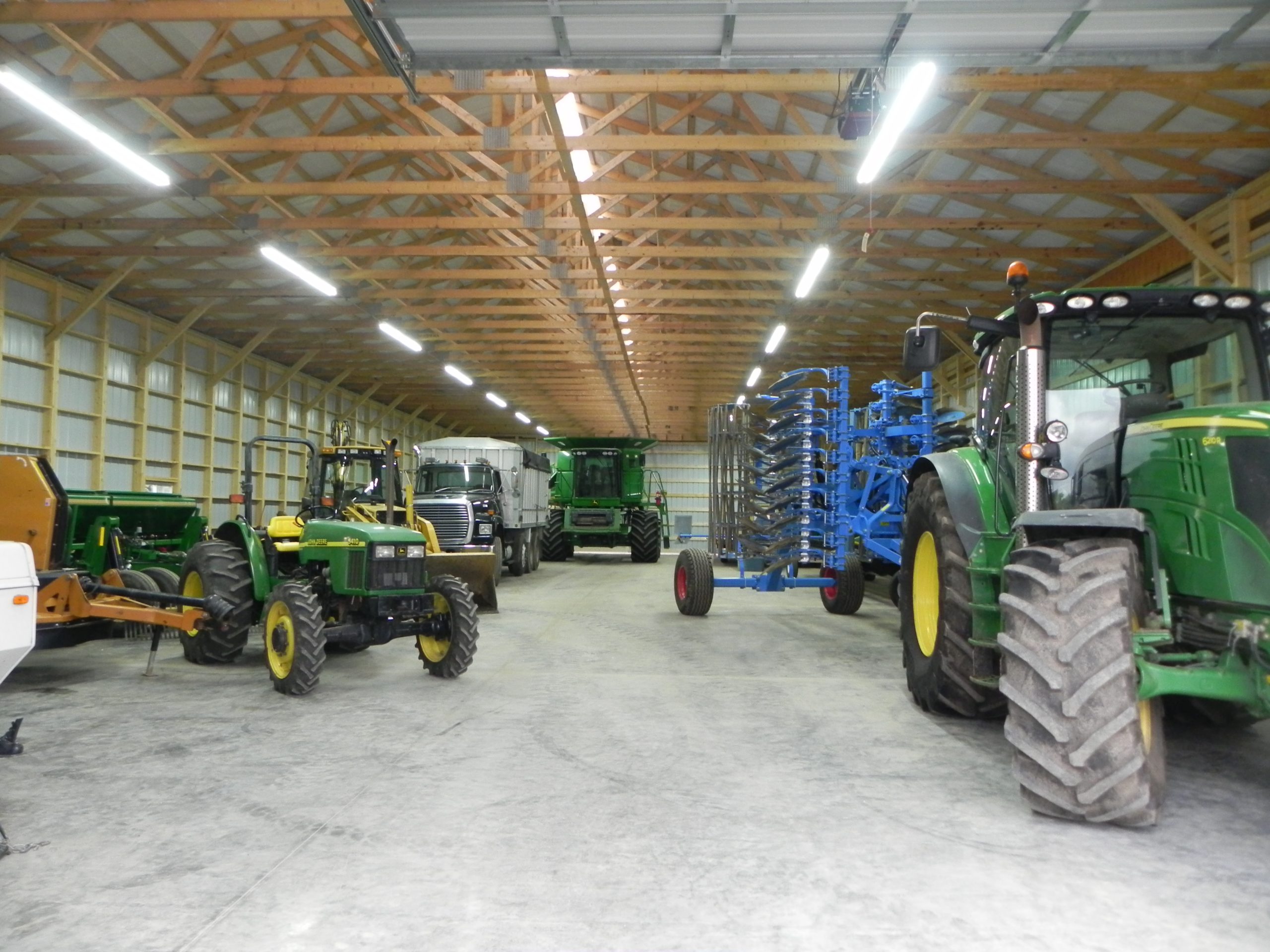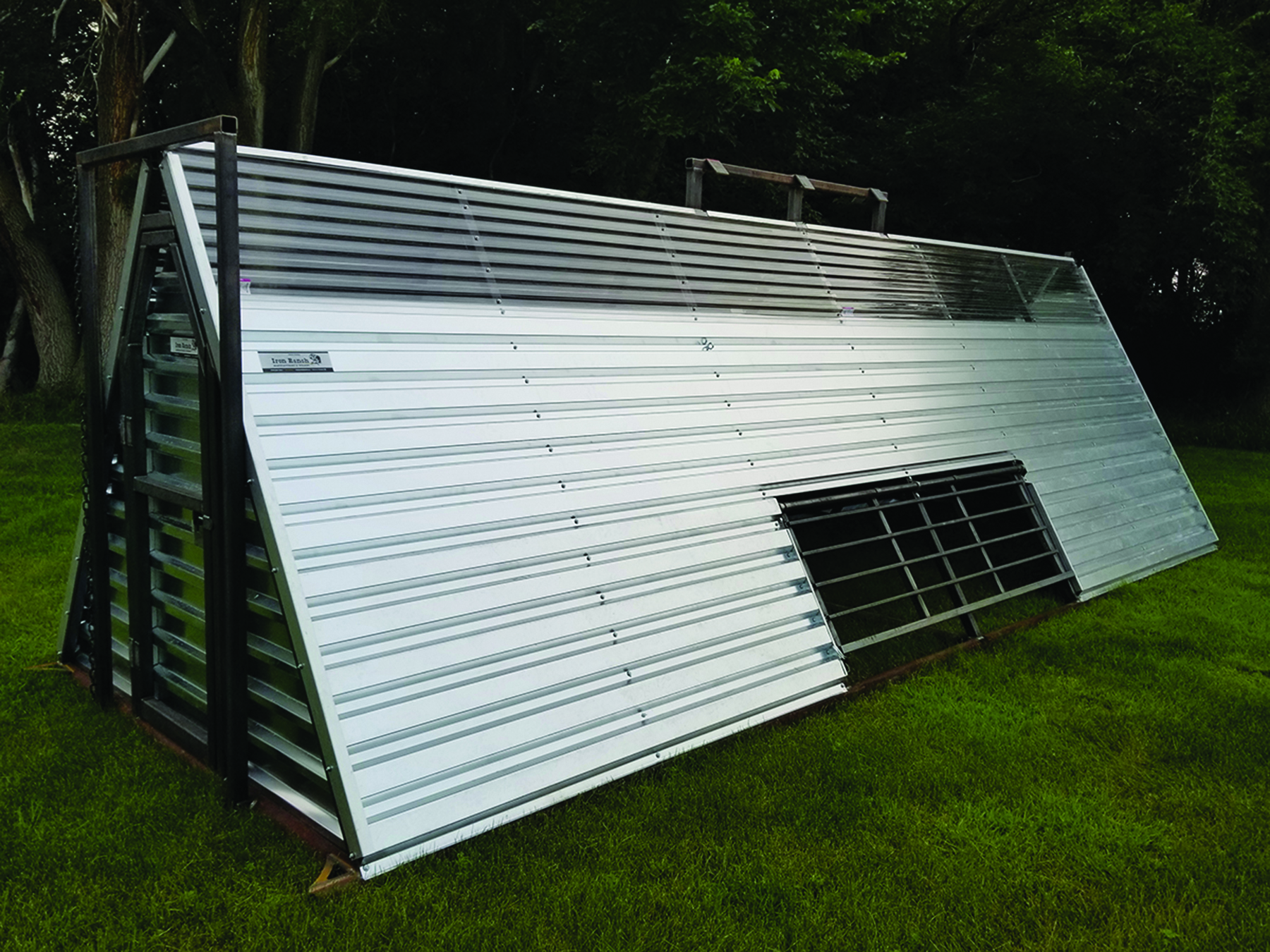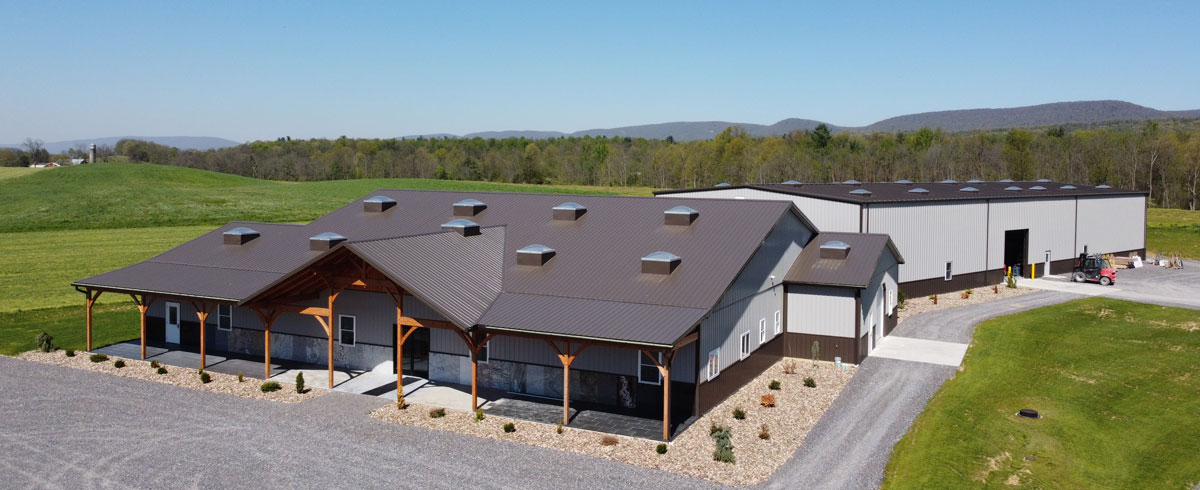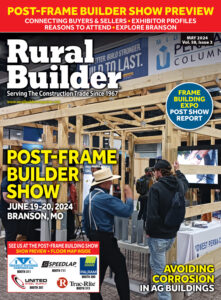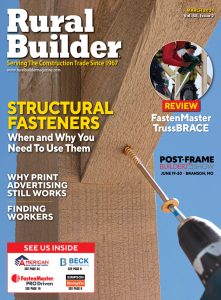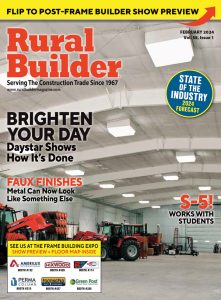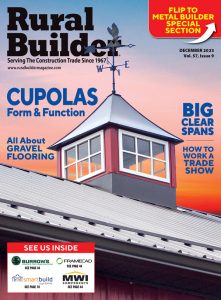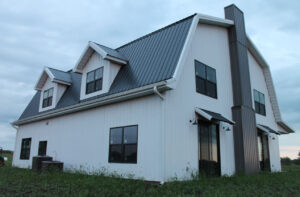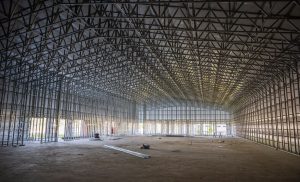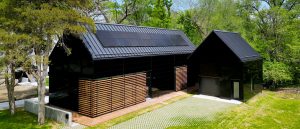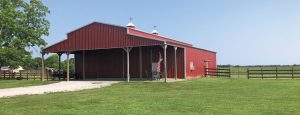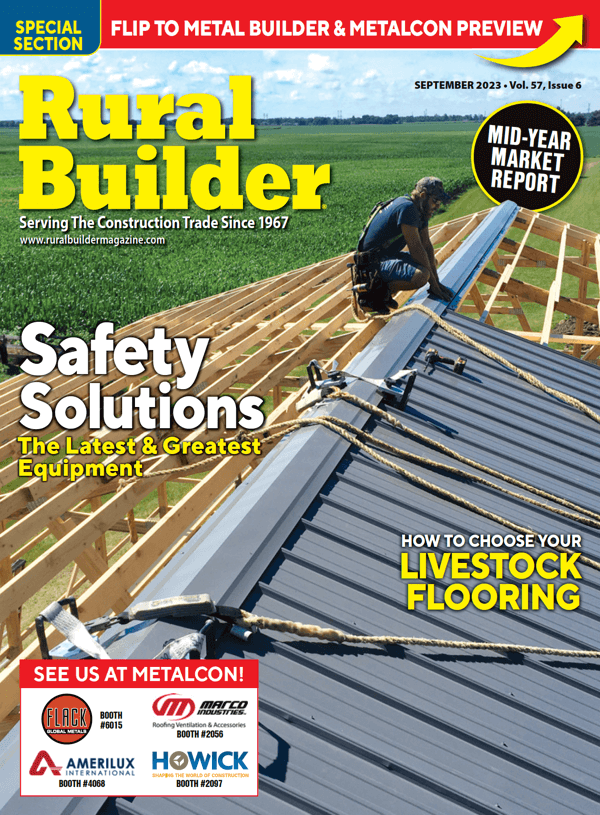Daylighting or skylighting is becoming increasingly popular, in part because the materials and products that enable it keep improving.
At the core of an effective daylighting construction is a product called polycarbonate, which is an extremely strong plastic that naturally blocks UV rays. Builders who frequently work on greenhouses and similar structures are used to working with polycarbonate, but for many contractors, there is upside if they can learn to work with it to expand their business into greenhouses or more effectively create a barn, among other ideas where “free” and natural light have a place.
Kenneth Schlabach, owner of DayStar’s Natural Lighting System, said these systems “bring in light efficiently and transmits it effectively with minimal loss. The system can Illuminate interiors evenly and persistently without hot spots in buildings of any size.”
We asked several manufacturers to help builders and contractors learn about polycarbonate so they can create better daylighting opportunities.
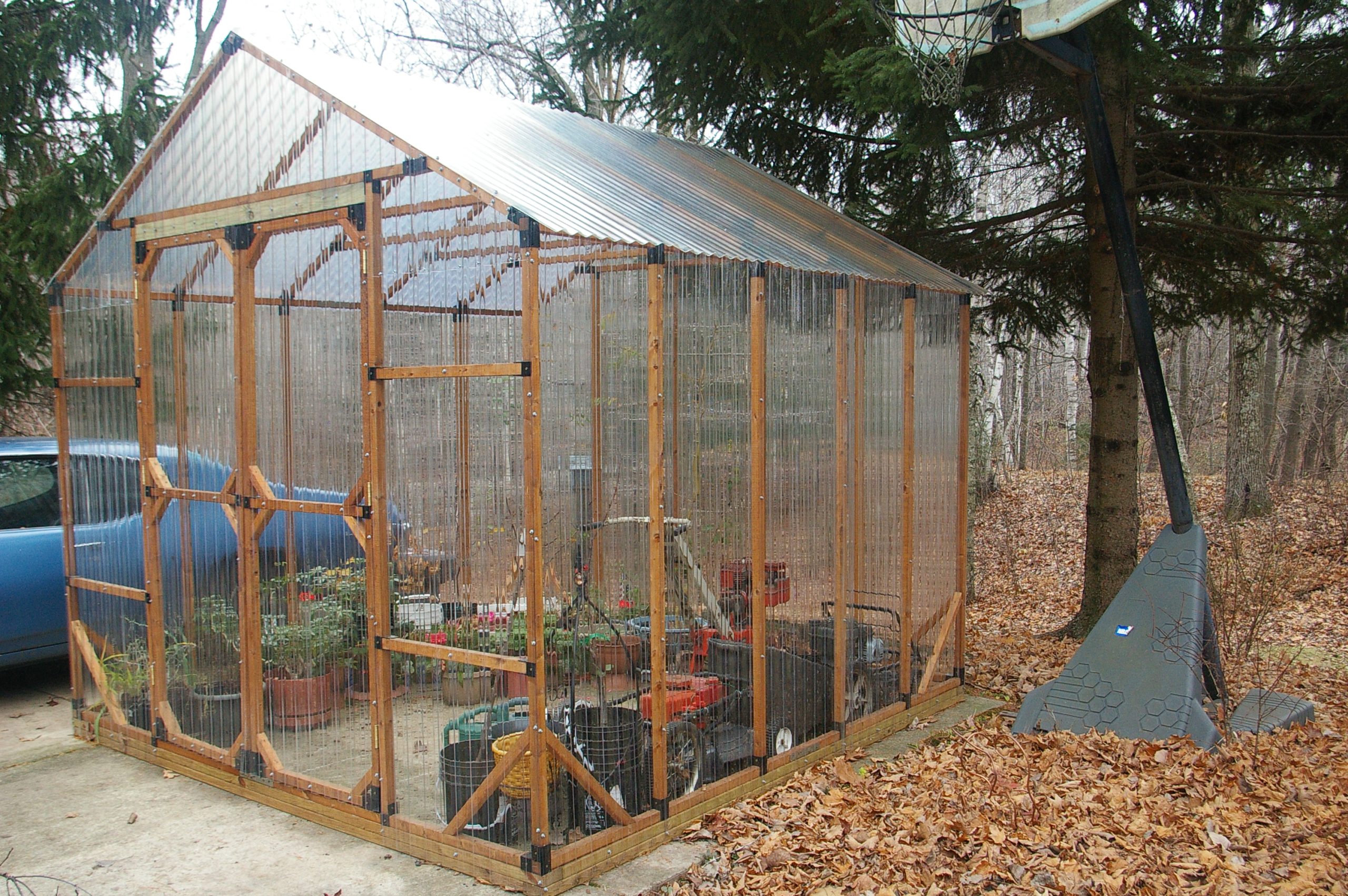
The Basics of Polycarbonate
So where to start? Research comes first. A polycarbonate company is a great place to start as they have experts on staff.
Buddy Pullen, Regional Sales Manager for AmeriLux International, advises that builders who aren’t familiar with polycarbonate “consider all aspects to decide on the right products. There are many grades or versions of polycarbonate, so make sure you are getting the right product for the project, meaning don’t pay for features that your project may not require and vice versa. Don’t skimp on cost when your project calls for those extra features like thickness, UV protection, anti-condensation coatings, and clarity.”
Andrew Mullen, president of Direct Metals, Inc., said builders should look into the specification and installation practices before ordering. In particular, look at framing requirements and on-center purlin spacing requirements. “The 0.8 mm thick panels typically span 2′ on center purlins; 1.5 mm and 2.0 mm panels can span 4′ and 5′ on center purlin spacing.”
One thing you’ll learn early in your research stage is that this material borders on amazing. A description of its properties almost sounds made-up. “You are choosing a strong material, up to 20x stronger than fiberglass and with UV protection,” said Lucía
Villegas, Marketing Director, Onduline North America. She said their company’s panels, for instance, “can withstand extreme temperatures (from -40°F to 270°F), are highly resistant to extreme weather like hail and wind, and retain opacity over time. Using polycarbonate skylighting will lower your electric bills as well as creating a calm environment for everyone working inside the building.”
Schlabach said their panels come in three common sizes — 2’x2’, 2’X4′, and 4’x4′ — and that the largest panel is the top seller because bigger is better when it comes to transferring light. “Given it does not cost much more to purchase a 4′ x 4′, it usually makes the most sense,” he said, adding that the products come in regular slope and ridge-mounted versions.
Understand the Lifespan
Polycarbonate panels do not last forever; at some point they will turn yellow and need to be replaced. So factor that into your pricing considerations. One expert told us to expect to replace it every 10 years, and then be happy if it lasts 15 or 20 years, which is very possible. Another person said in their experience, 20 years is not only possible, but typical. The point is, at some point and depending on conditions, it will start to turn yellow. Be prepared to amortize your expense over 15 or 20 years, not 40 or 50.
Using Polycarbonate in Workplaces
All representatives we spoke to about polycarbonate talked about natural light and its ability to make a project either more practical or economical, or both. It is particularly effective in work spaces. “Having natural light while at work improves your (and where necessary your animal’s) mood and welfare,” Villegas said. She added that at work, “when exposed to natural lighting, you reduce stress hormones, enhancing productivity. When adding a skylight to your building, you need to choose a reliable and strong material like polycarbonate.”
“A well-lit factory thrives,” said Mark Weaver, Technical Manager for Palram. “A warehouse that’s bright and full of light makes it easier to pick, pull, package, and ship.
“Corrugated polycarbonate panels create a more comfortable, worker-friendly environment for enhanced productivity. They are perfect for skylights, ridge lighting, and vertical sidelights, all of which can decrease energy costs by reducing the need for daytime electric lighting.”
Polycarbonate Horsepower
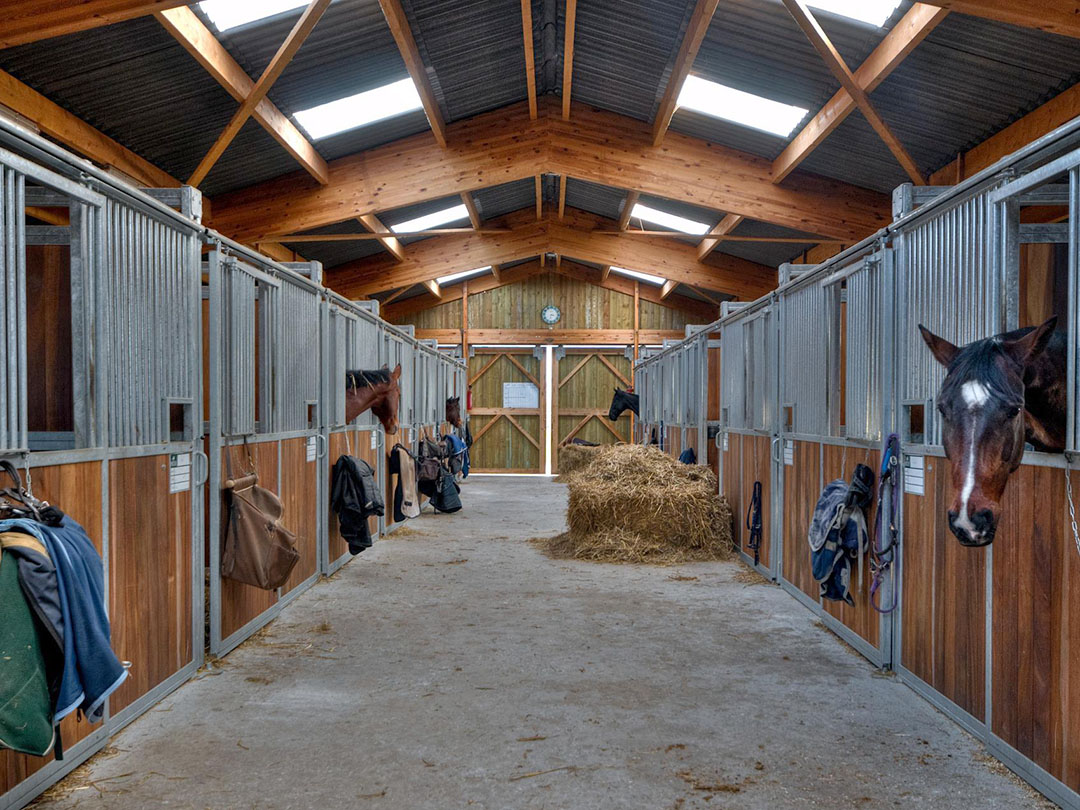
Barns, especially those for horses, are prime candidates for daylighting because of the benefits of natural light. Photo courtesy of AmeriLux.
Barns are also a target for daylighting, especially when they’re home to horses. “Agricultural buildings and livestock shelters seem more in-tune with Mother Nature when you let all the sun’s
goodness shine through,” Weaver said. “The benefits of natural daylight for human and animal productivity are well documented.”
Pullen added that it’s not limited to clear colors, so you can create “free” lighting, and make your livestock happy, but it can also simply look good. “Daylighting buildings offer several benefits such as increased productivity in some livestock applications to reduced energy bills for lighting up building,” Pullen said. “Polycarbonate is also available in a range of colors so you can customize the amount of light coming in, and the level of diffusion and visibility inside the structure.”
Expanding and Contracting
What are the first few things that a builder who is new to polycarbonate is going to learn? Probably foremost is the fact that polycarbonate expands and contracts, so you need to factor that into your installation.
“All polycarbonate products naturally expand and contract with changes in temperature, so all panels must be fastened to allow for expansion and contraction,” Villegas said. “A very important step is to always pre-drill prior to fastening.”
That directly impacts your fastener choices. She said, for instance, the diameter of the hole should be 5/16″ when using their fastener. When using other fasteners, the hole must be 1/8″ to 3/16″ larger than the diameter of the shaft of the fastener.
“Fasteners should not be overtightened and it’s highly recommended to use fasteners with EPDM washers,” Villegas said. “In a roofing application, panels should be fastened on the crowns and every other corrugation. In a siding/wall application, panels should be fastened in the valleys of every other corrugation.”
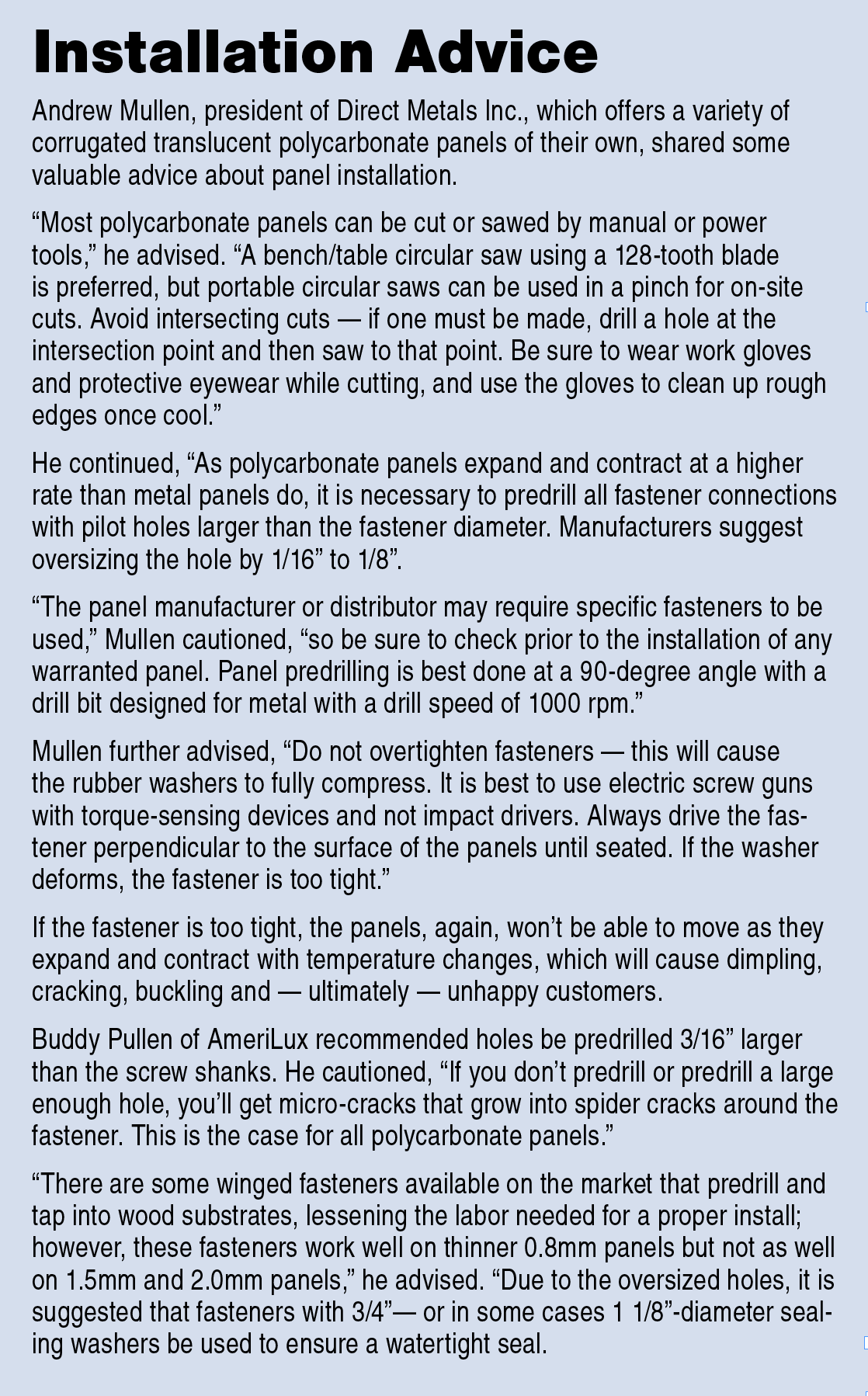
Pullen said proper installation and fasteners will extend the life of the product. “There is always concern around the longevity of polycarbonate, especially when it is part of metal building envelope,” he said. “To get the most out of the polycarbonate, it is important to follow installation guidelines including pre-drilling of fastener holes to allow for expansion and contraction. Another good way to extend the life is to install on vertical walls instead of weaving into a roof system. This gets the panels out of direct UV exposure and protects them from impact damages such as debris falling on the roof.”
Weaver concurred that a very common challenge when installing corrugated polycarbonate sheets is “not allowing for thermal expansion. Thermoplastics thermally expand and contract more than the metal panels they are being matched to, and this inherent physical property needs to be taken into consideration.”
Therefore, he said, “It is imperative to predrill oversized holes in the polycarbonate panel at all fastening points. The oversizing of the holes allows the space between the shank of the fastener and polycarbonate to accommodate the panel’s thermal expansion characteristics.”
Mullen concurred. “It is typical that unexperienced installers try to install these panels with the typical installation procedures that you would use for a metal panel,” he said. “Polycarbonate requires an oversized predrill of the panel at all fastener locations, and particular attention to compatibility should be paid to any sealants selected for use with these panels.”
Similarly, some installations struggle with leakage because the installer wasn’t sure how to handle the new-to-them material. “It is very important to follow all details of the manufacturer’s installation instructions,” Weaver said. “All too often, installers treat the polycarbonate panels the same as they would corrugated metal panels. While the installation methods are similar, there are intricacies to installing polycarbonate panels which must be adhered to in order to ensure a leak-free installation.”
Additional Points to Remember
Storage and Stacking. When storing polycarbonate panels in the yard or on a job site, it is important to stack shorter panels on top of longer panels and ensure they are on a flat surface that is equal to or longer than the longest panel. It is recommended that the panels be stored in a cool, dry area out of direct sunlight. (When the panels are stacked together, each panel layer acts as a magnifying glass under the sun’s rays with nowhere for the solar heat buildup to escape, which can then warp the panel.)
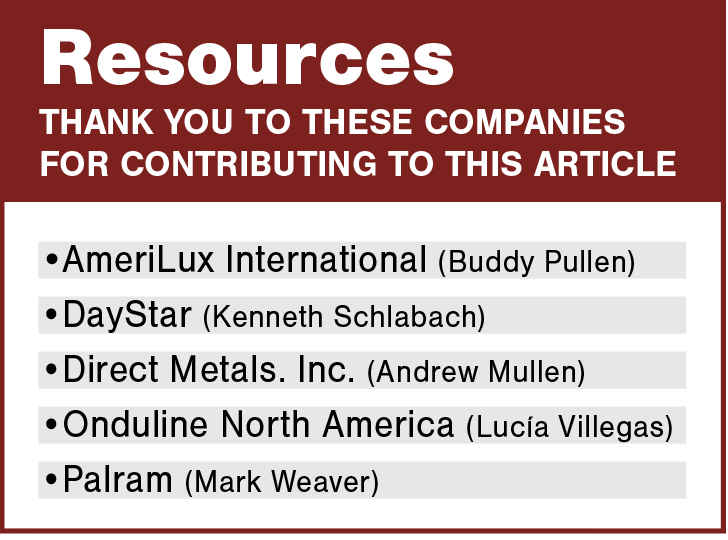
“When storing the panels, they need to be stored out of the sun, preferably vertically and indoors – don’t store outside and uncovered,” Villegas said. She added that cutting the Onduline is easy. “You can do it with a pair of snips or heavy-duty scissors. If you wish to cut multiple panels at the same time, you can do it using a circular saw with a plywood blade reversed, or a fine-toothed handsaw.”
Cleaning. If the panels got dirty during storage, it’s easier to clean them before installation rather than after. Pullen suggested warm soapy water and a soft cloth or sponge.
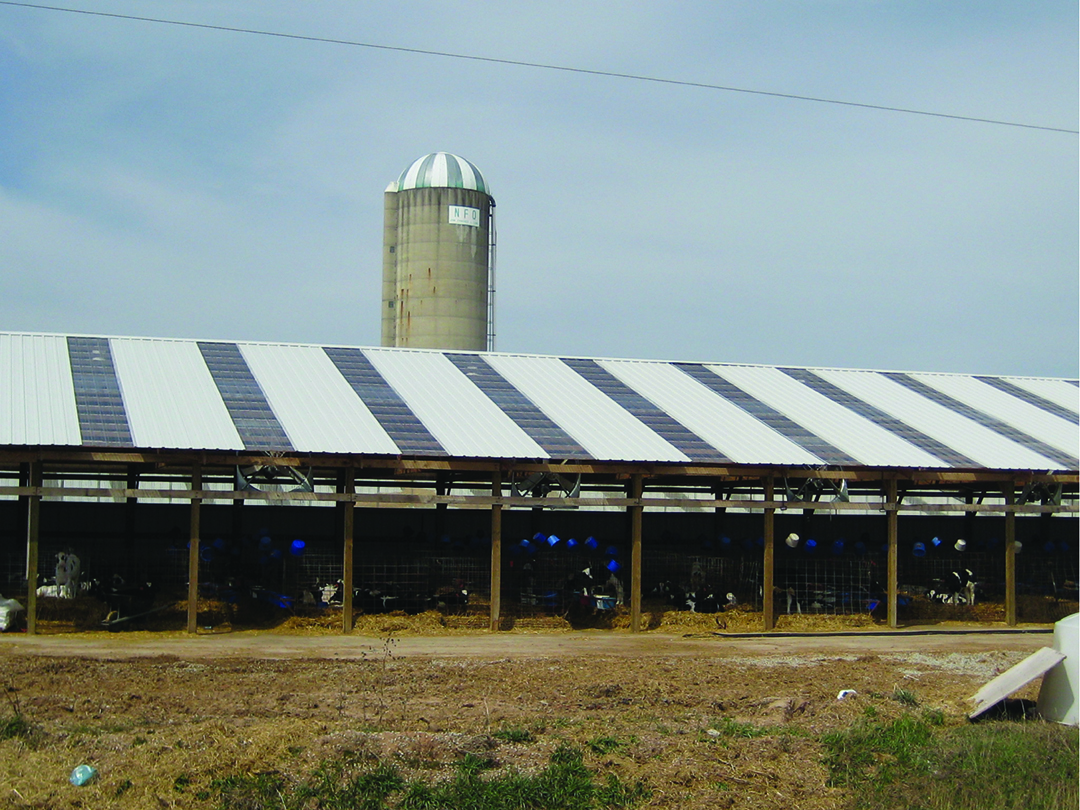
Do Not Walk. Never walk directly on a polycarbonate panel, even if they are fastened. Use scaffolds, ladders, or crawl boards. Don’t leave the panels unattended and unsecured on a structure; they could blow off.
Match Profiles. If you are installing with metal panels, make sure the profile of the polycarbonate panel is an exact match to the profile of the metal panel. If the gaps between the major ribs and/or the minor ribs are too large, your installation will not be successful. Some manufacturers can match your panel exactly to ensure a smooth installation.
Watch the Coating. When installing, understand if you’re working with a coated product; if so, you may need to face the panel a certain way. Other panels have UV protection throughout the entire thickness of the panel. It is also recommended to install with a roof pitch equal to or greater than 1:12 and make sure you know the load ratings for the chosen panel with the configuration of the structure.
Fastening Patterns. Each polycarbonate panel profile usually has a unique recommended fastening pattern either for best results, or to meet more stringent building codes, such as the Florida Building Code. .
Profiles. “Remember to think about the profile of the polycarbonate skylight panel; it needs to match the profile of the metal panels for a simple and easy installation,” Villegas said. RB


